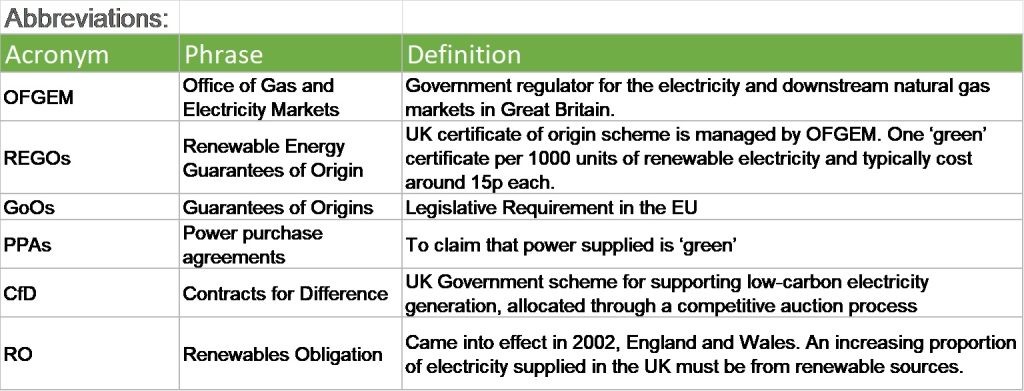By Lydia Newman
What is renewable energy?
Renewable energy is clean energy from a natural source such as wind, hydro and solar, that doesn’t involve burning fossil fuels, such as gas, oil or coal.
What is a renewable energy tariff?
Most buildings receive their electricity through the national grid which is a network of energy generators all feeding into the same system. It means that in reality, the electricity we consume is from a mixture of fossil fuels and renewable sources.

A renewable energy tariff is a consumer option offered by an energy supplier that matches the electricity you consume with the purchase of renewable electricity – but often this is only in theory.
So what’s the problem?
Many suppliers have been accused of offering ‘green-wash’ tariffs, where in some cases the company has had no real direct purchases of renewable energy.
Instead, the supplier purchases Renewable Energy Guarantees of Origin (REGO) as an offset. This creates doubt, because the consumer doesn’t actually know whether this is a legitimate purchase of renewable energy that has been fed into the national grid on their behalf or just a cheap offshore certificate without a transparent chain of custody.
A recent report by the consultancy, Baringa, shows that few suppliers can prove that their electricity is 100% renewable.
Can I buy renewable energy?
For most customers, it’s possible to only buy energy through a renewable tariff and that’s different to directly purchasing renewable energy.
Renewable energy tariffs are similar to an offset, where consumers are receiving electricity generated from a range of sources including the burning of fossil fuel while their suppliers commit to purchase extra renewable energy as an offset.
What can we do about it?
We can honour the environment by being more sceptical and looking beyond what many energy companies claim. We must ask ourselves whether the energy we are purchasing is truly renewably sourced.
Those that do, include Scottish Power, Ecotricity and Good Energy who all purchase energy direct from renewable generators with power purchase agreements rather than buying cheap REGO certificates.
Many domestic homeowners may not have time to research the multitude of acronyms that mask the true situation behind renewable energy tariffs.
Will purchasing a renewable tariff help the climate?
Most customers don’t know what they’re getting. Everyone receives broadly the same mix of electricity. A percentage of consumers will be using a tariff that is genuinely linked to real purchase agreements – these tariffs are likely to be the most expensive but be the cleanest.
If you’re thinking of switching your energy supplier, it’s worth researching carefully. It is easy to fall victim to greenwashing!



